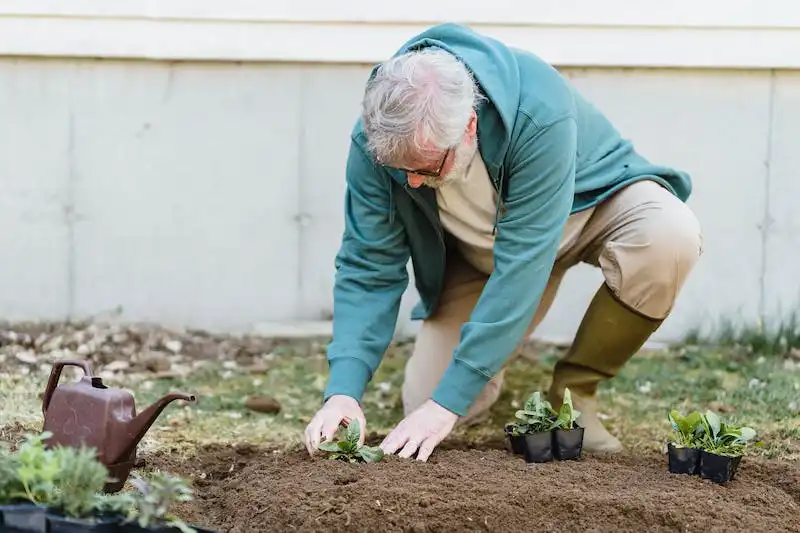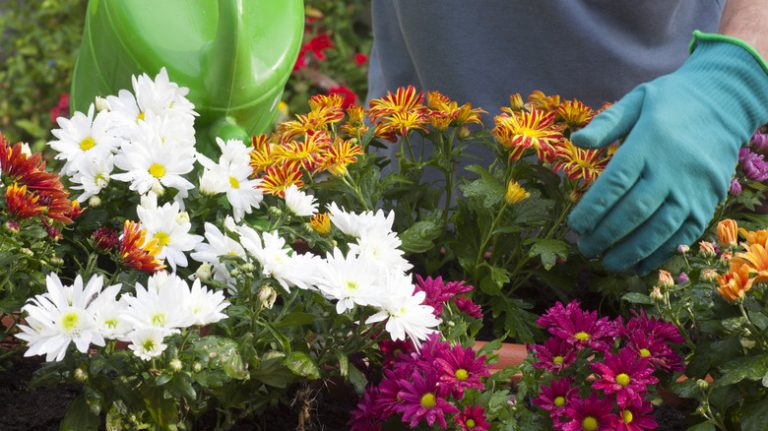Deadheading roses is a necessary step in maintaining the health and appearance of these beautiful plants. Whether you have hybrid tea roses, floribundas, or other types of roses in your garden, deadheading is a routine chore that should be performed regularly to keep the flowers blooming and your garden looking its best.
Deadheading involves removing spent blooms from the plant. The idea behind deadheading is to remove faded or wilted flowers so that the plant can redirect its energy towards new growth and repeat-flowering. Additionally, deadheading helps prevent the formation of seeds, as roses that are allowed to produce seeds may stop blooming. By regularly deadheading your roses, you can encourage the production of new blooms and maintain a longer blooming season.
But how do you deadhead a rose plant? There are several methods you can use. One popular method involves using secateurs to make a clean cut just above a 5-leaflet plant. Another method is to simply twist off the faded flower, making sure to remove the entire spent bloom, including the small, round eye present at the base of the flower. Some gardeners prefer to snap off the spent bloom where it meets the cane, while others recommend spraying the stem and cutting just above a 5-leaf junction.
The timing of deadheading is also important. You want to remove the spent blooms before they have a chance to develop seeds, but not too early that you remove flowers that are still blooming. A good rule of thumb is to deadhead when the petals have started to wither or fade. Be sure to cut at a 45-degree angle, about ¼ inch above a leaf node or bud. This will help the plant heal quickly and prevent disease from entering through the open wound.
If the idea of individually deadheading each rose in your garden seems like a daunting task, there is a simpler alternative. Some gardeners recommend a method called “roses by the armful”. Simply cut the rose bushes back by about one-third to one-half, just above a five-leaflet set of leaves. This will remove the spent flowers and encourage new growth and blooming. It may not be as precise as individually deadheading each stem, but it can help you maintain a tidy and beautiful rose garden with minimal effort.
In conclusion, deadheading roses is an important part of rose care. It helps to keep the plants healthy and encourages more blooms and repeat-flowering. There are different methods you can use to deadhead, and the timing and angle of the cut are important factors to consider. Experiment with different techniques to find what works best for you and your roses. With proper deadheading, you can ensure your roses remain in full bloom and make a stunning addition to any garden or floral arrangement.
How And When To Deadhead Roses
Deadheading roses is an important task for rose gardeners who want to keep their plants healthy and blooming. Deadheading is the process of removing spent flowers from a rose plant, promoting new growth and encouraging repeat flowering.
When it comes to deadheading roses, timing is everything. The best time to deadhead roses is during their flush of blooming, typically during the summer months. Deadheading can be done on any type of rose, whether it’s a hybrid tea, floribunda, or shrub rose.
So, how do you deadhead a rose? The most common method is to use a pair of sharp secateurs or pruning shears to remove the spent blooms. It’s important to make the cut just above a bud, as this will help direct the growth of the plant and prevent any future disease or pest issues.
When deadheading, it’s helpful to look for the first 5-leaflet leaf and remove the stem just above it. This will ensure that the plant continues to grow and produce more blooms. However, if you have a rose variety with only 3-leaf or 7-leaf leaflets, you can still deadhead it in the same way.
Another method of deadheading roses is to remove the faded blooms by gently twisting them off. This can be done by hand or with a quick upward flick of the wrist. This method is particularly useful for removing wilted or damaged flowers without causing any harm to the plant.
What should you do with the spent blooms after deadheading? Some gardeners choose to collect the rose petals to use in potpourri or crafts, while others simply throw them away in the compost. Either way, removing the spent flowers is a necessary part of proper rose care.
Deadheading roses not only keeps your garden looking neat and tidy, but it also helps to prolong the flowering season. By removing fading blooms, you’re encouraging the plant to produce more flowers, which gives your rose garden an extended burst of color.
In addition to deadheading roses, it’s also important to remove any dead or diseased wood from the plant. This will help prevent the spread of disease and allow for better air circulation around the rose plant. If you notice any frost damage on the canes, it’s best to prune them back to healthy growth.
To sum it up, deadheading roses is a necessary task for any rose gardener. By removing spent blooms and promoting new growth, you can ensure that your roses stay healthy and continue to produce beautiful flowers throughout the growing season.
So, next time you’re enjoying a cup of tea in your rose garden, don’t forget to deadhead your roses and keep them blooming at their best!
The best way to deadhead
Deadheading roses is an important task for any rose gardener. It is the process of removing spent flowers from the plant in order to encourage continuous blooming and maintain an aesthetic appearance. But what is the best way to deadhead roses?
One method is to remove the entire spent flower head, including the stem, by cutting it back to the first set of healthy leaves. This is commonly known as “pruning to a five-leaflet” and is recommended for most types of roses, including hybrid teas, floribundas, and shrub roses. Cutting the stem at an angle helps to prevent water from pooling on the cut and potentially causing disease.
For repeat-flowering roses, you can also use the “knock at the junction” method. Simply knock or twist the spent flower head at the base until it comes off. This method is quick and easy and can be used for both single and cluster-flowering roses.
Another technique is called “pinching off.” This involves removing just the wilted or faded petals and leaving the stem and hip intact. Pinching off the withered petals helps to keep the rose bush looking neat and tidy, and can also help prevent seed production if you don’t want your roses to self-pollinate.
Regardless of the method you choose, deadheading should be done regularly as part of your routine rose care. Not only does it promote new growth and more flowers, but it also prevents the plant from wasting energy on producing seeds. Plus, it’s a great opportunity to really get up close and personal with your roses and appreciate their beauty up close.
So, whether you’re a novice or an experienced gardener, deadheading is a practice that can benefit all rose plants. It’s a simple task with big rewards – more flowers, a healthier plant, and a garden that looks its best all season long.
Timing and helpful tips for deadheading
Deadheading is an important routine for rose gardeners, as it helps promote continuous flowering and keeps the plants looking their best. Knowing when and how to deadhead your roses can make a big difference in the overall health and aesthetic appeal of your rose plants.
When to deadhead depends on the type of rose you have. For hybrid tea roses and floribunda roses, deadheading should be done throughout the growing season whenever the flowers have withered. This ensures that energy is not wasted on producing seeds and instead is directed towards new growth and additional blooms.
For shrub roses and other types of roses that produce hips (the fruit of the rose), deadheading can be done after the roses have bloomed and the flowers have wilted. This is usually in late summer or early fall. Removing the withered flowers at this time helps prevent the rose plants from wasting energy on producing seeds.
When deadheading, it’s important to use the right technique. The standard method is to locate the first set of healthy leaves below the spent flower, and make a diagonal cut just above a leaf node. This promotes new growth and prevents disease or pests from infiltrating the plant through a poorly healed wound.
Another method is to snap off the spent flower head at the junction of the stem and cane, or simply twist off the dead flower at the base. The key is to remove the entire flower head, including the base of the petals. This prevents any remaining pollen or seeds from pollinating and potentially inhibiting new growth.
As you deadhead your roses, it can also be helpful to prune back any long, unsightly stems to encourage fuller growth. This is especially important for established rose bushes that may have become leggy or overgrown.
Here are some helpful tips for deadheading roses:
- Deadhead regularly throughout the blooming season to promote continuous flowering.
- Remove any wilted or diseased flowers to prevent the spread of disease.
- Consider deadheading roses in the early morning or late evening when the temperatures are cooler.
- Wear gloves to protect your hands from thorns and potential scratches.
- Collect and dispose of the deadheaded blooms to keep your garden clean and tidy.
- If you’re interested in creating a bouquet, deadheading is a great way to harvest roses without harming the plant.
- Don’t be afraid to experiment with different deadheading techniques to find what works best for your roses.
By following these timing and tips, you’ll not only keep your roses looking their best, but you’ll also promote healthy growth and long-lasting, beautiful blooms.




